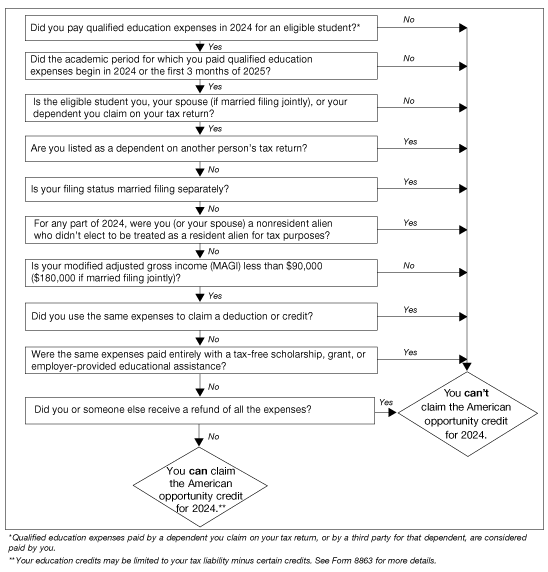Yes, Education IRA funds can be used for room and board. These expenses must meet specific criteria to qualify.
Education IRAs, also known as Coverdell Education Savings Accounts (ESAs), offer a flexible way to save for educational expenses. These accounts allow for tax-free withdrawals to cover qualified educational costs. Many people wonder if these funds can be used for room and board.
The answer is yes, provided the student is enrolled at least half-time in a qualifying educational institution. Qualified room and board expenses include on-campus housing or off-campus housing up to the school’s cost of attendance allowance. This flexibility makes Education IRAs a valuable tool for managing and planning educational expenses efficiently.

Credit: www.irs.gov
Education Ira Basics
Understanding the basics of an Education IRA is crucial. This helps in planning your child’s education expenses. Education IRAs, also known as Coverdell Education Savings Accounts (ESAs), offer tax benefits.
What Is An Education Ira?
An Education IRA is a savings account. It is used for education expenses. The account grows tax-free. The money must be used for qualified education expenses.
Parents, grandparents, or others can contribute. Contributions are limited to $2,000 per year per child. The child must be under 18 years old.
Types Of Qualified Expenses
Qualified expenses include many costs. These costs relate to schooling. Here is a list of some qualified expenses:
- Tuition fees
- Books and supplies
- Room and board
- Special needs services
- Tutoring and academic services
Room and board expenses can be covered. The student must be enrolled at least half-time. This includes on-campus housing and meal plans.
| Expense Type | Details |
|---|---|
| Tuition | Fees for attending school |
| Books | Textbooks and required materials |
| Room and Board | Housing and meal plans |
| Special Needs | Services for students with disabilities |
| Tutoring | Academic assistance services |
Room And Board Definition
Understanding whether an Education IRA can cover room and board is essential. Room and board are critical aspects of college expenses. They often make up a significant part of the total cost of attendance.
What Constitutes Room And Board?
Room and board typically include housing and meal plans. These expenses cover the cost of a dorm room or an off-campus apartment. They also include the cost of meals, whether provided by the school or prepared independently.
Universities offer various housing options. These can range from shared dormitory rooms to private apartments. Meal plans can vary too, offering different levels of service. You can choose from plans offering three meals a day to those offering only a few meals per week.
Cost Breakdown
The cost of room and board can differ greatly. It depends on the location and type of housing. Below is a typical cost breakdown:
| Expense | Average Cost per Year |
|---|---|
| On-Campus Housing | $10,000 – $15,000 |
| Off-Campus Housing | $8,000 – $12,000 |
| Meal Plan | $3,000 – $5,000 |
| Utilities and Other Expenses | $1,000 – $2,000 |
Eligible Educational Institutions
Understanding which educational institutions qualify is important. It determines if you can use your Education IRA for room and board.
Accreditation Requirements
Institutions must meet specific accreditation requirements. This ensures they offer valid education programs. Here are some key points:
- Accredited by the Department of Education.
- Eligible to participate in federal student aid programs.
Types Of Institutions
Various types of institutions qualify. Here are the main categories:
- Colleges and Universities: These include both public and private institutions.
- Vocational Schools: Trade and technical schools also qualify.
- International Institutions: Some foreign schools are eligible if they meet criteria.
Qualified Expenses Criteria
Understanding the qualified expenses criteria is crucial for using an Education IRA. Knowing what counts can help you make the most out of your savings. This guide explains the IRS guidelines and lists commonly covered costs.
Irs Guidelines
The IRS guidelines specify what expenses are considered qualified. These include:
- Tuition fees
- Books and supplies
- Room and board
Room and board qualify if the student is enrolled at least half-time. The cost should not exceed the allowance determined by the institution. The IRS also considers expenses for special needs services. These must be necessary for the student’s education.
Commonly Covered Costs
Commonly covered costs under Education IRA include:
| Expense Type | Description |
|---|---|
| Tuition | Fees for attending classes |
| Books | Textbooks required for courses |
| Supplies | Materials needed for studies |
| Room and Board | Housing and meal plans |
Room And Board Coverage
Education IRAs, also known as Coverdell Education Savings Accounts (ESAs), offer a way to save for educational expenses. One common question is whether these funds can be used for room and board. Understanding the specific conditions can help maximize benefits.
When It Applies
Funds from an Education IRA can cover room and board. This applies if the student is enrolled at least half-time in a qualifying institution. The costs must not exceed the greater of the following two options:
| Option | Description |
|---|---|
| 1 | The actual amount charged by the institution for room and board. |
| 2 | The allowance for room and board, as determined by the institution, included in the cost of attendance. |
Exceptions And Limitations
Some limitations exist for using Education IRA funds for room and board. If the student lives off-campus, they must keep detailed records of expenses. These records should include rent, utilities, and food costs.
Room and board expenses must be reasonable and necessary. The student must attend an eligible educational institution. If these conditions are not met, funds used for room and board may be subject to taxes and penalties.
Also, funds cannot cover room and board during non-academic periods. For example, summer break unless the student is enrolled in classes during that time.
How To Use Ira Funds
Education IRAs, also known as Coverdell Education Savings Accounts (ESAs), offer a great way to save for education expenses. One common question is if they can be used for room and board. Here, we explore how to use IRA funds for this purpose.
Withdrawal Process
To use IRA funds, follow these steps:
- Contact your IRA custodian.
- Request a withdrawal form.
- Fill out the form with necessary details.
- Submit the form to your custodian.
Important: Make sure to specify that funds are for qualified education expenses. This includes room and board if the student is enrolled at least half-time.
Tax Implications
Understanding tax implications is crucial:
- Qualified expenses: Withdrawals for room and board are tax-free.
- Non-qualified expenses: Subject to taxes and a 10% penalty.
Keep records of all expenses to avoid issues with the IRS.
| Expense Type | Tax Implications |
|---|---|
| Qualified (Room and Board) | Tax-free |
| Non-qualified | Taxable + 10% penalty |
Maximizing Ira Benefits
Using an Education IRA for room and board can be a smart move. It helps cover essential college expenses. Let’s explore how you can maximize these benefits.
Strategic Planning
Planning ahead is crucial. Ensure that your IRA covers eligible expenses. Room and board are part of this. Confirm with your financial advisor for the latest rules.
Track your expenses carefully. Keep receipts for rent, meal plans, and utilities. This documentation helps during tax time. It also ensures you use your IRA wisely.
Consider the cost of living in different areas. Some colleges have higher room and board fees. Compare these costs before making a decision.
| College | Room and Board Cost |
|---|---|
| College A | $10,000 |
| College B | $8,500 |
| College C | $12,000 |
Alternative Funding Options
Explore other funding sources too. Scholarships and grants can reduce costs. Apply for as many as possible.
Consider part-time work. Many students work on campus. This can help cover room and board expenses.
- Apply for scholarships
- Seek grants
- Work part-time
Look into federal student loans. These often have low-interest rates. They can also help cover additional expenses.
- Fill out the FAFSA form
- Review your loan options
- Choose the best loan for you
By maximizing your IRA benefits and exploring other options, you can effectively manage college costs. This ensures a smoother educational journey.

Credit: www.wsj.com
Common Misconceptions
Many people have questions about using an Education IRA. One common question is if it can be used for room and board expenses. There are several misconceptions about this. Let’s break them down to understand the facts better.
Myths About Room And Board
Some believe Education IRA funds can’t cover room and board. This is not true. The key is understanding the rules and limits.
- Myth: Only tuition fees are covered.
- Myth: Room and board are never qualified expenses.
- Myth: You can use funds for any housing costs.
Clarifying Facts
Let’s clarify what is actually allowed. Education IRAs can cover room and board if the student is enrolled at least half-time.
| Expense Type | Covered by Education IRA? |
|---|---|
| Tuition | Yes |
| Room and Board | Yes, if enrolled half-time |
| Books and Supplies | Yes |
- Check your school’s cost of attendance.
- Confirm enrollment status.
- Use funds within the allowed limits.
Half-time enrollment is required to use funds for room and board. This means the student must be taking at least half of a full-time course load.
Case Studies
Education IRAs, also known as Coverdell Education Savings Accounts (ESAs), help students cover various educational expenses. While tuition and fees are commonly covered, many wonder if they can use these funds for room and board. Let’s explore some real-life case studies to understand the practical applications and outcomes.
Real-life Examples
Meet Sarah, a college sophomore who used her Education IRA to pay for her dormitory. She found that the funds covered both her room and board, which relieved her financial stress.
Another example is James, who lived off-campus. He used his Education IRA to cover rent and groceries. His expenses qualified because they were necessary for his education.
Lessons Learned
- Eligibility: Always verify if your expenses qualify. The IRS has specific guidelines.
- Documentation: Keep all receipts and proof of expenses. This will help in case of an audit.
- Limits: Be aware of the annual contribution limits. Over-contributing can lead to penalties.
These case studies show how Education IRAs can effectively cover room and board. Proper planning and documentation are key to maximizing benefits.
| Case | Type of Housing | Expenses Covered |
|---|---|---|
| Sarah | Dormitory | Room and Board |
| James | Off-campus | Rent and Groceries |

Credit: www.trustetc.com
Future Of Education Iras
The future of Education IRAs looks promising. Education IRAs, also known as Coverdell Education Savings Accounts, offer tax advantages for saving for education. They are evolving to meet the needs of modern students. Let’s explore upcoming changes and their potential impact on students.
Upcoming Changes
Upcoming changes to Education IRAs include broader usage. These changes may allow funds to cover room and board. This would be a significant shift. Currently, funds can only cover tuition, fees, books, and supplies.
The proposed changes aim to make Education IRAs more flexible. This flexibility would benefit many students. For example, those attending colleges with high living costs. It would also help students who need off-campus housing.
Lawmakers are discussing these changes. They aim to pass new regulations soon. These changes could take effect within the next few years.
Potential Impact On Students
The potential impact on students is significant. If Education IRAs cover room and board, students can save more. This would reduce their need for student loans. Lower student debt is a major benefit.
Here are some potential impacts:
- More students can afford higher education.
- Reduced financial stress for families.
- Increased college enrollment rates.
- Better academic performance due to reduced financial worries.
Let’s look at a table comparing current and proposed uses:
| Current Uses | Proposed Uses |
|---|---|
| Tuition | Tuition |
| Fees | Fees |
| Books | Books |
| Supplies | Supplies |
| Not Room and Board | Room and Board |
Frequently Asked Questions
What Can Educational Ira Funds Be Used For?
Educational IRA funds can be used for qualified education expenses. These include tuition, books, supplies, and equipment. Funds can also cover room and board for eligible students.
Can I Use My Coverdell For Room And Board?
Yes, you can use Coverdell ESA funds for room and board. This applies if the student is enrolled at least half-time.
Are Room And Board Qualified Education Expenses?
Room and board can qualify as education expenses if the student is enrolled at least half-time. Check specific tax guidelines.
What Are Qualified Education Expenses For Ira Withdrawal?
Qualified education expenses for IRA withdrawal include tuition, fees, books, supplies, and equipment. Room and board qualify if the student attends at least half-time.
Conclusion
Understanding the flexibility of an Education IRA is crucial for financial planning. Room and board costs can be covered, easing the burden on families. This makes Education IRAs a valuable tool for managing education expenses. Always consult with a financial advisor to maximize the benefits and ensure compliance with regulations.
- India All State Medical Colleges List 2024

- Top 20 Ranking MEdical Colleges in India 2024

- What is the Difference between Common Application and University Application?

- How Much are University Tuition Fees in the UK: 2024 Cost Guide

- What to Do If Your University Application is Rejected: Complete Guidelines

- Why It is Important in the University Application Process: Key Insights

- Difference between State University And Private University: Key Insights

- When Does University Application Open for 2025: Key Dates Revealed

- Is It Better to Apply Early for University: Unveil the Advantages

- Can You Claim University Application Fees on Taxes Canada: Find Out Now

- How Will University Benefit from Having You on the Course? Discover!

- What is the Main Idea of Importance of Education: Unlocking Future Success
